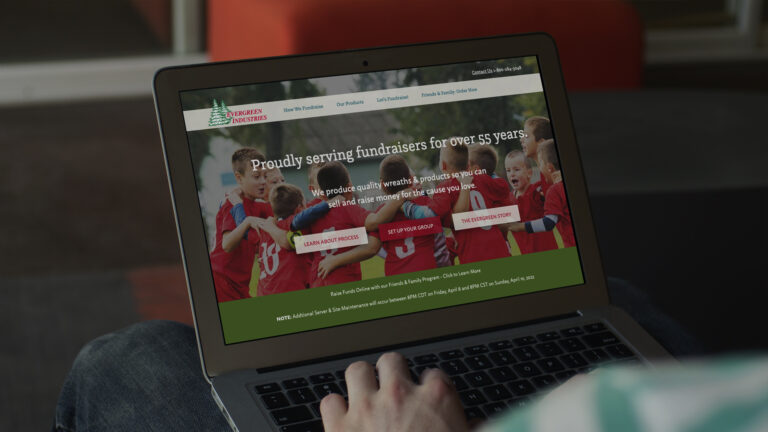Fundraising is the lifeblood of many nonprofit organizations. Whether the funds are allocated to a specific program or added to a general fund, successful fundraising campaigns enable organizations to further their missions and have a lasting impact. A well-executed fundraiser not only raises much-needed money but also raises awareness for the cause, attracting new donors and engaging the community.
However, for many nonprofits, fundraising can feel like a guessing game. Without clear strategies and measurable goals, organizations may find themselves repeating ineffective campaigns that fail to yield the desired results. To maximize the success of fundraising efforts, nonprofit leaders should be aware of common pitfalls and adopt strategies to avoid them. Here are five common fundraising mistakes to avoid in 2024:
1. Choosing the Wrong Product, Event, or Strategy
Nonprofits have a plethora of fundraising options at their disposal, ranging from product sales to events and online campaigns. The key is to select a fundraiser that aligns with the organization’s mission and resonates with its supporters. A youth organization, for example, might achieve greater success with a family-oriented event or product sale, such as a holiday wreath campaign, which appeals to families and community members who are already interested in supporting youth activities. Similarly, a more upscale event, like a gala or silent auction, may be better suited to organizations targeting corporate donors or affluent community members. In 2024, it’s crucial to also consider digital fundraising strategies, such as online crowdfunding, peer-to-peer campaigns, and virtual events, which have become increasingly popular and effective in reaching a broader audience.
2. Inadequate Marketing and Outreach
One of the biggest mistakes nonprofits make is underestimating the importance of marketing and outreach. Even the most compelling cause requires effective promotion to capture the attention of potential donors. It’s not enough to assume that people will automatically support your cause because it’s meaningful to you. In today’s competitive fundraising environment, nonprofits must proactively share their stories and demonstrate the tangible impact of donations. This involves a multi-channel marketing approach, including social media, email campaigns, local media coverage, and community events. Digital marketing tools such as Google Ads Grants for nonprofits and social media advertising can be cost-effective ways to reach a larger audience. Additionally, engaging supporters through storytelling, video content, and personalized outreach can significantly enhance donor engagement and retention.
3. Weak or Ineffective Leadership
Leadership is the cornerstone of any successful fundraising effort. Without a dedicated and strategic leader, campaigns can quickly lose direction and momentum. Effective fundraising leaders are not only passionate about the cause but also skilled in organizing teams, setting clear goals, and adapting strategies based on results. In 2024, leadership in fundraising also means being data-driven and tech-savvy. Leaders should utilize fundraising software and analytics tools to track progress, measure success, and make data-informed decisions. Regular training and development opportunities for fundraising leaders and volunteers can also ensure that the team stays current with the latest fundraising trends and techniques.
4. Lack of a Documented and Organized Plan
Turnover is common in nonprofit organizations, particularly among volunteers, making it essential to have a well-documented fundraising plan. By keeping detailed records of past campaigns—what worked, what didn’t, and why—organizations can build on previous successes and avoid repeating mistakes. Using digital tools like Google Drive, Trello, or other project management platforms can help organize and store important documents, such as best practices, contact lists, templates, marketing materials, and financial records. A comprehensive fundraising playbook ensures continuity and allows new volunteers and staff to quickly get up to speed and contribute effectively.
5. Setting Undefined or Unrealistic Goals
Goal-setting is fundamental to any successful fundraising campaign. However, goals should be specific, measurable, attainable, relevant, and time-bound (SMART). In 2024, it’s vital for fundraising groups to not only set clear financial targets but also consider broader objectives, such as increasing donor retention, expanding their donor base, or boosting community engagement. Utilizing tools like online dashboards, fundraising thermometers, or internal leaderboards can help track progress and motivate participants by showing real-time updates on campaign performance. Encouraging friendly competition among teams or individuals can drive participation and boost results, but it’s equally important to recognize and celebrate all contributions to foster a positive and inclusive environment.
Adapting for Future Success
To run successful campaigns year after year, nonprofits must be willing to learn and adapt. By understanding common fundraising mistakes and implementing strategies to avoid them, organizations can enhance their fundraising efforts and build stronger relationships with their supporters. Engaging with the community, leveraging technology, and maintaining transparency with donors are key to creating a sustainable fundraising strategy.
As nonprofits continue to navigate an ever-evolving landscape, those that embrace innovation and prioritize community engagement will find themselves well-positioned to achieve their fundraising goals and further their mission.




